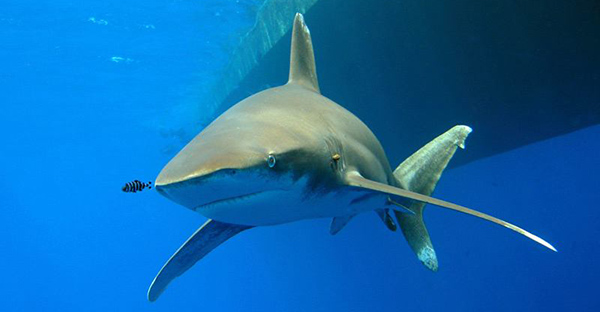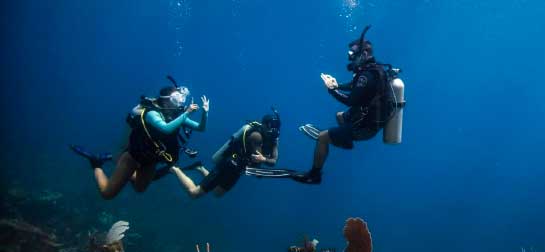What about sharks?
June 01, 2011
Некоторые рекомендации по безопасности при дайвинге с акулами в Красном Море
Humans are not the usual food for sharksOf the 230 sharks’ species in the world's oceans, only six species are potentially dangerous to humans. BUT: Still sharks are wild predators living in their own habitat. Sharks behavior can never be 100% predicted. |
Therefore:
- In Egypt, it is forbidden to feed and lure sharks. Never enter the water if you see any signs of feeding or luring predators.
- Dive in places where sharks can be encountered only if you are absolutely confident in yourself and in your buddy.
- Avoid sudden and fast movements if sharks are in sight.
- You are the most vulnerable on the surface. If there are sharks under the boat, start descending immediately after entering the water. Once you're underwater, establish neutral buoyancy to avoid unnecessary fining.
- If there are sharks swimming directly below you, avoid fast ascent to the surface.
- Go out of water in a calm and an organized way.
- Most shark species that are curious about humans live away from the reef. Dive close to the reef and keep even closer to the reef in case of danger. If conditions allow, surface right at the edge of the reef.
- Never touch sharks or otherwise irritate them. Do not block their escape route in caves, canyons and caverns.
- If a shark is slowly circling around you, don't panic. But try to keep your face to the shark, and not lose sight of it. A sign that a shark is about to attack is that its pectoral fins will be ``down'' and not horizontal.
- From time to time, check around to see if another shark is approaching you. Control the space below and above you. Sharks, like other predators, are characterized by exploratory behavior when an unknown object (i.e. you) appears.
- Sharks always prefer to get close to solo divers. Avoid swimming alone in areas where you may encounter sharks.
 Oceanic Whitetip Shark Carcharhinus longimanus
Oceanic Whitetip Shark Carcharhinus longimanus
When swimming or snorkeling follow these rules to reduce the risk of shark attack:
|




